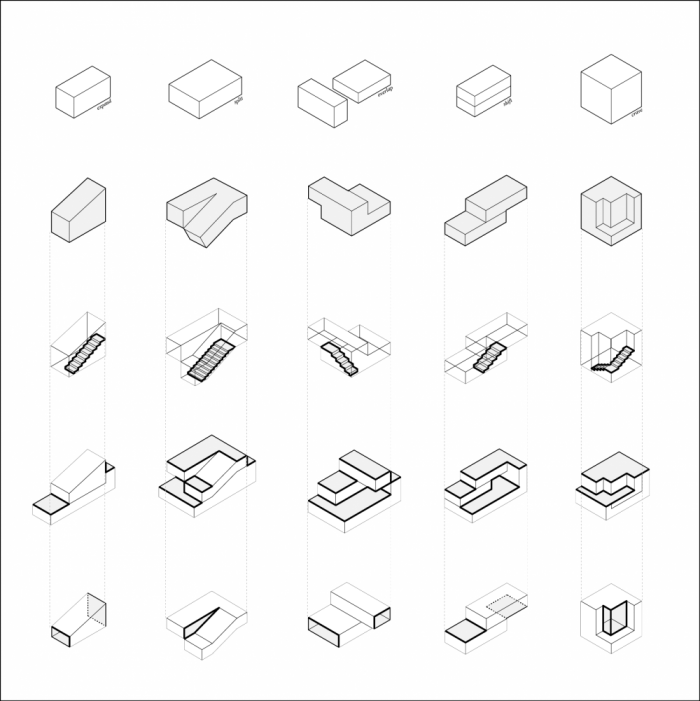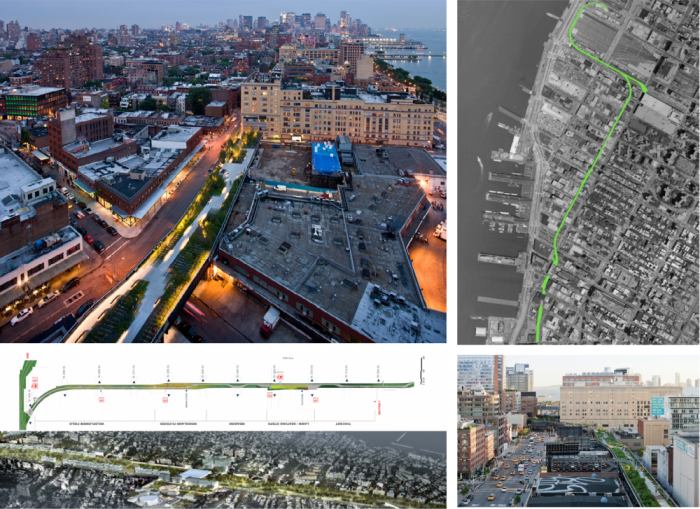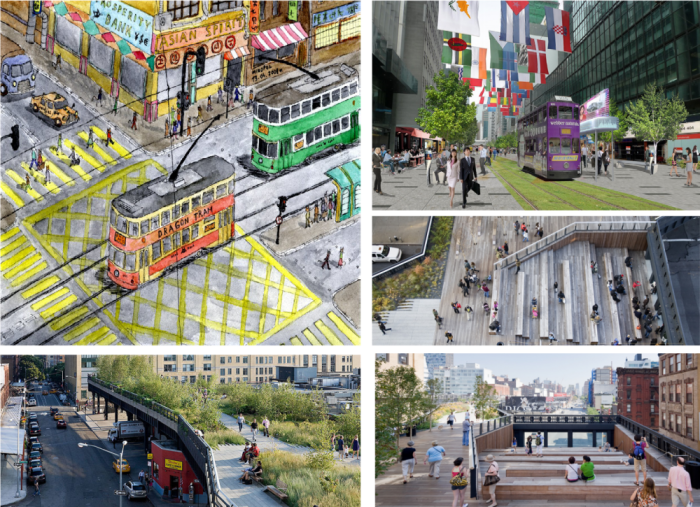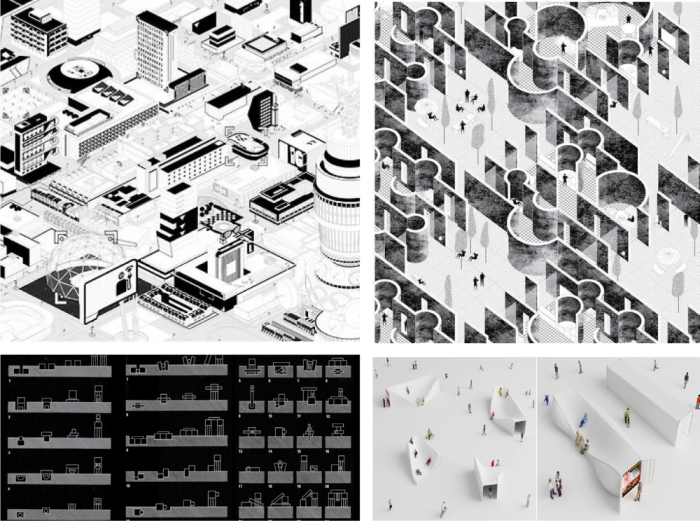|
ARTIFACT

This thesis suggests how a basic volume be operated with verbs as a
fundamental design tool of generating the volumetric hybrids.
This inspires a logic and systematic approach on consideration of spatial
character or programatic needs by operating of actions.
This thesis aims at provoking abstract spatial thinking and volumetric interplay
to develop a new method of exploring spatial experience and architectural
interpretation.
WHY?

Steven Holl’s Parallax
Steven Holl describes “space” as the essence of architecture. It is a new elastic spatial perception
or architectural experience that depends on the movement of the body through space. Space is
simultaneously many things – the voids in architecture, the space around architecture, the cast space
of landscape and city space, intergalactic spaces of the univrse. Space is something both instrinsic and
relational. Vertical and oblique slippages are key to new spatial perceptions. The turn and twist of the
body engaging a long and then short perspective, an up-and-down movement, an open-and-closed or
dark-and-light rhythm of geometries – these are the core of the spatial score of architecture.
Precedent
The High Line is a precedent urban park that reclaims a former elevated railroad for new use, promoting
timely principles of ecological sustainability, urban regeneration and adaptive reuse. Preservation and
innovation come together to establish an urban corridor for habitat, wildlife and people. In addition to
providing valuable open space for New York City, the High Line has become an economic generator
for the neighborhood, attracting investment toward new cultural institutions, commercial and residential
development.
My Proposition
I was inspired by the Steven Holl and I would like to introduce operative verbs as an new approach in
design process to think about the interaction of volumes in space, relationship of interior and exterior, at
various scales and perspectives. The actions are defined to differentiate how they operate volumetrically
for the starting point of creation of space. Responding to programmatic requirements and given site coditions,
the transformation of volume is by logic volumetric organization of the aggregations and combinations.
WHAT?

The site, scale and scope
The site will be situated along the tramway and the scale of the test case will be approximate the
coverage of a few tram stations within a selected district. I will look into the relationship of the tramway
with streetscape, the connectivity of the traffic ad social flow from the tram stops. Also, the topography,
urban fabric of the city and the people activity would be my scope of research.
Why is this site
The tramway was incorporated in the Hong Kong Isand in 1904 to deal with the expanding populatoin
and economical growth in Hong Kong during the late 1800s. Hong Kong tramway is a living historical
heritage which is full of the city’s memory of Old Hong Kong. The tram’s slow tempo of pace is an
interesting contrast to the rapif-fire Hong Kong nowsaday. The tramway extends from the west to the
east of Hong Kong Island and running through different distrcts with distinguished streetscape character.
Changing of sight line and spatial experience happens along the tramway. It was an efficient transport
system which connects people, community, history, nature and economy.
Theorization of the site selection
To further develop my design methodology, I would like to explore how the abstract spatial action
can yield in a larger sense of scale and complexity. Volumetric relationships, proxiities, adjacencies,
and experiential factors should be well considered without being weighed down by the familiar and
preconceived notions of what the space was meant to be.
The spatial connectivity is also emphaszed to integrate the internal qualities, spatial aexperience,
sensible circulation and movement with the external spatial complex.
HOW?

Stage 01 – Analytical Design Research
Case study analysis with similar objective, scale, scope or material. Eg. Reserach on the high line, public space, micro-urban
space, high density streetscape or dynamic landscape design. Due on Dec 29.
Site analysis on history, background of the tramway, urban fabric, street context, circulation, opportunities and deficiencies on site.
Due on Jan 5.
Stage 02 – Design Synthesis
Generation of Design drawing and model with concept. Eg, Continuity, accessibility, street ambience, program, activities.
Experiement with physical modeling, well categorized and defined conditions of spatial verbs and action. Exploration for spatial
creation and quality. Due on Jan 26.
Review 1.0 Rehearse/ refine/present/write. Due on Feb 2.
Stage 03 – Testing the method
Testing and Refining the method by Physical Modeling on volumes with combined actions and aggregations, related to the site
conditions and needs. Review 2.0 Rehearse/ refine/present/write. Due on Mar 16.
Stage 04 – Revision/Refinement
Justification with digital modeling and renderings, associated programs should be considerably designed as followed. Review 3.0
Rehearse/ refine/present/write. Due on Apr 27.
Stage 05 – Final development/ Touch up
Final Review. Due on May 25
Bibliography 0: Theory:
1. Kenneth Frampton, 1920-1945, Modern Architecture, New York: Rizzoli International Publications
2. Steven Holl, 2000, ”Correlational Programming” in Parallax, Princeton_New York, 212-213
3. Léonor Mégrot-Desallais Faculté d’Architecture La Cambre-Horta ULB – Bruxelles – Master inspired by Aldo Van Eyck
4. Shinkenchiku International Residential Competition 2008 (Japan)
5. Vitra Design Museu George Nelson Installation
6. Anthony Di Mari & Nora Yoo, 2012, Operative Design, BIS Publishers
|



